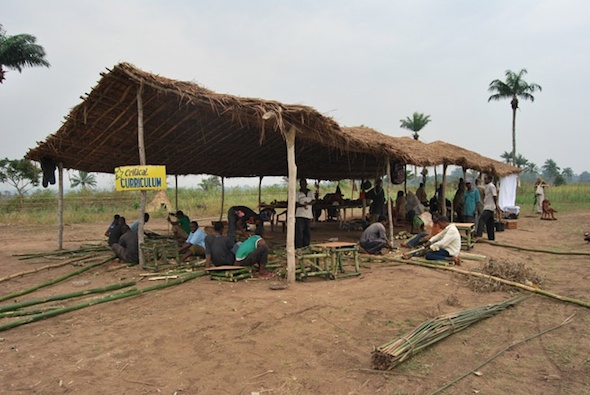October 15, 2014 - October 17, 2014
A series of afternoon talks as part of the ICA's Frieze-week program at The Old Selfridges Hotel in London.
Featuring Kari Altmann, Alex Bacon, Hannah Black, Michael Connor, Constant Dullaart, Renzo Martens, Monira Al Qadiri (GCC), Takeshi Shiomitsu, Martine Syms, Christopher Kulendran Thomas, and Amalia Ulman.

Amalia's Instagram – 10th July 2014.
With the screen arguably now the primary site of encounter for contemporary art, this talks series, taking place as part of ICA Off-Site: The Old Selfridges Hotel, examines the ways in which internet circulation has affected art practice and art's function.
Do You Follow? Art in Circulation begins with the premise that images do not merely depict their surrounding reality, but actively produce and shape it in economic, social, and physical ways. With the advent of the internet, the image's power to effect such transformation has greatly expanded. As a result, image production is by default a posthuman process, subject to the demands of global flows. Images circulating on a network may produce far-flung realities, in unpredictable ways. Some even claim that the world is becoming an image.
Building on last year's Post-Net Aesthetics panel, this series continues the conversation about art under a networked condition, exploring possible artistic positions in response to three particular aspects of this condition: the internet's tendency to turn artworks into pure image-commodities, to turn locations into image-places, and bodies into image-bodies. How can artists participate in the reshaping of the world by posthuman images and find political possibilities and expansive subjectivities within this process?
Wednesday Oct 15, 3:30pm
"Internet circulation has made all art look the same"

Martine Syms, For Nights Like This One, 1979, 2014.
"Why does so much new abstraction look the same?" asked critic Jerry Saltz in New York magazine earlier this year. Galleries, he lamented, have gone over to "copycat mediocrity and mechanical art," coming to resemble the generic look of shopping outlets rather than the "individual arks" of the past. In particular, Saltz criticised the influence wielded by "speculator-collectors," which many understood to refer to art world figures who use social media channels such as Instagram to generate attention for their favoured artists.
On this panel, art historian Alex Bacon challenges Saltz' contention, suggesting instead that we are not looking carefully enough. Artists Martine Syms, Takeshi Shiomitsu, and Kari Altmann discuss the role that internet feeds play in their practice, arguing for different understandings of the problems and potential of "sameness" in art. Chaired by Rhizome Curator/Editor Michael Connor.
Thursday Oct 16, 3:30pm
"Internet circulation changes places into image-places"

Renzo Martens, Episode III: Enjoy Poverty, 2008
There is often a gap between what images do and what they say they do. When we talk about images, we often discuss their content or message or our experience of them. Beyond the question of impact on the spectator, though, images act on the world in fundamental ways. Renzo Marten's film Episode III: Enjoy Poverty (2008) for example, documented his efforts in the Congo to establish ways for local people to profit from images of their lives. With its injunctive title, Martens' starting point was that the content of images produced by well-meaning foreign photographers was less important than their effect, which was (in part) to earn money for those photo-journalists.
Through the work of four artists who deal with very different locations, this panel considers how places circulate as images, how this circulation shapes such places, and how artists can participate (or not) in such transformations.
Speakers include artists Constant Dullaart, Renzo Martens, Monira Al Qadiri (GCC), and Christopher Kulendran Thomas.
Friday Oct 17, 3:30pm
"Internet circulation changes bodies into image-bodies"

Amalia Ulman
A selfie is not a portrait, critic Brian Droitcour has argued, because unlike a portrait, which inscribes the sitter in history, it inscribes the body of its subject/maker into a network. This panel continues this line of reasoning, positing that the process of inscribing bodies into networks allows them to circulate as images. To borrow a term from artist Andrea Crespo, our image-bodies morph, interact with one another, spark strong attachments with human viewers, and ultimately effect transformations on our physical bodies in ways that may be oppressive, liberatory, or both.
This panel will include a presentation by artist Amalia Ulman, who for her online performance Excellences and Perfections (2014) used her social media accounts to circulate images depicting her body undergoing a surgical and cosmetic transformation. It also features artist and writer Hannah Black, whose work has dealt with bodies as vessels, the theorisation of the "Hot Babe," and (most recently) the abolition of the body.
Work from Amalia Ulman's Excellences and Perfections will be presented beginning October 20 as part of First Look, the online exhibition series jointly curated by Rhizome and the New Museum.
In collaboration with:


